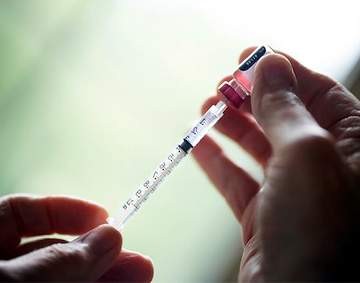 Patients with diabetes sometimes no symptoms especially in long time before being diagnosed. The common symptoms of diabetes include:
Patients with diabetes sometimes no symptoms especially in long time before being diagnosed. The common symptoms of diabetes include:
Primary lot:
When blood sugar levels rise, will be excreted in the urine. When it will pull water from the kidneys in the body to dilute the urine and urine volume increased. That is why patients with frequent urination.
Thirsty
Because patients have frequent urination due to increased demand that the body uses water to replenish water lost due to urinate. When it will stimulate the patient thirsty and drink more.
Hunger
Although elevated blood glucose, but glucose can not get into cells to produce energy, so the body is still "hungry" and create a sense of hunger. Patients who eat a lot of energy but still not used.
Weight loss
Patients who do not take enough insulin to glucose into the cells for energy, then the body will lysis of muscle tissue and fat tissue to produce energy for the body. Cause weight loss, common in patients with type 1 diabetes more.
Fatigue
Since energy can not make up the body feel tired.
Blurred vision
Because the body takes care of the eye lens do collapse, reducing the regulator should cause symptoms of blurred vision. When appropriate treatment, symptoms will lose
Delayed wound healing
Wound healing than normal, due to high blood sugar causes the body to reduce bacterial resistance and the ability to slow wound healing.
Infection
When diabetes patients are susceptible to infections and often recurrent. Women often UTI or yeast infection.
Itching skin
Feeling itchy sometimes be a symptom of diabetes, can cause dry skin due.
Swollen gums and inflammation
Gingivitis and periodontitis may be a symptom of diabetes
Sexual Dysfunction
Erectile dysfunction and apathy are the common symptoms of diabetes.
Tingling sensation or numbness, especially in the feet or feet high hyperglycemia can cause damage to the peripheral nerve fibers and cause symptoms such as pain, stinging, tingling, numbness ... in feet, hands.
When blood sugar levels rise, will be excreted in the urine. When it will pull water from the kidneys in the body to dilute the urine and urine volume increased. That is why patients with frequent urination.
Thirsty
Because patients have frequent urination due to increased demand that the body uses water to replenish water lost due to urinate. When it will stimulate the patient thirsty and drink more.
Hunger
Although elevated blood glucose, but glucose can not get into cells to produce energy, so the body is still "hungry" and create a sense of hunger. Patients who eat a lot of energy but still not used.
Weight loss
Patients who do not take enough insulin to glucose into the cells for energy, then the body will lysis of muscle tissue and fat tissue to produce energy for the body. Cause weight loss, common in patients with type 1 diabetes more.
Fatigue
Since energy can not make up the body feel tired.
Blurred vision
Because the body takes care of the eye lens do collapse, reducing the regulator should cause symptoms of blurred vision. When appropriate treatment, symptoms will lose
Delayed wound healing
Wound healing than normal, due to high blood sugar causes the body to reduce bacterial resistance and the ability to slow wound healing.
Infection
When diabetes patients are susceptible to infections and often recurrent. Women often UTI or yeast infection.
Itching skin
Feeling itchy sometimes be a symptom of diabetes, can cause dry skin due.
Swollen gums and inflammation
Gingivitis and periodontitis may be a symptom of diabetes
Sexual Dysfunction
Erectile dysfunction and apathy are the common symptoms of diabetes.
Tingling sensation or numbness, especially in the feet or feet high hyperglycemia can cause damage to the peripheral nerve fibers and cause symptoms such as pain, stinging, tingling, numbness ... in feet, hands.
Type the onset of type 1 diabetes usually appears suddenly.
As type 2 diabetes occurs slowly, it is difficult to detect. Indeed, patients with type 2 diabetes do not have any clear expression early. These people are often diagnosed after a few years, when the complications were present.













